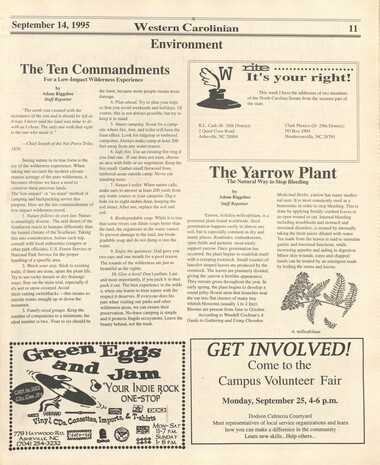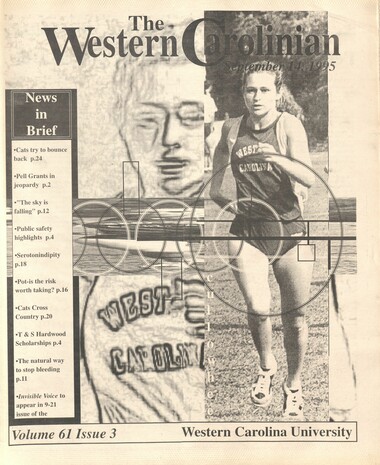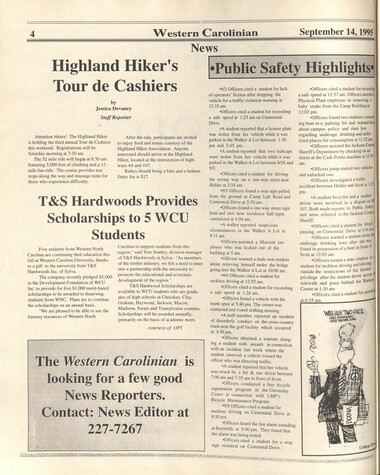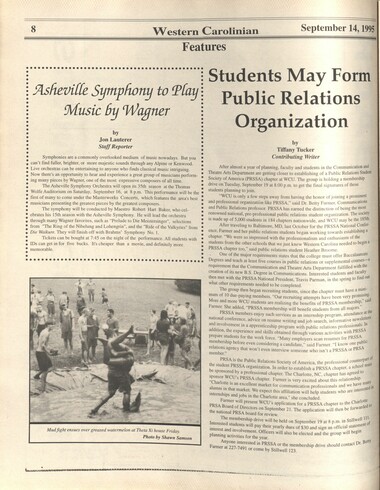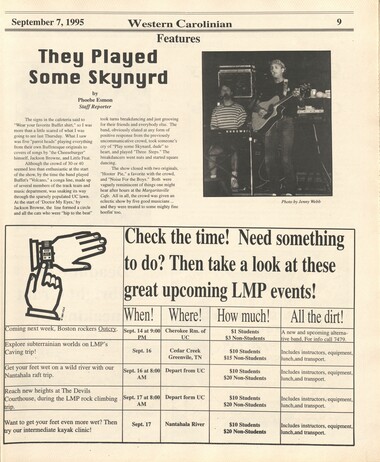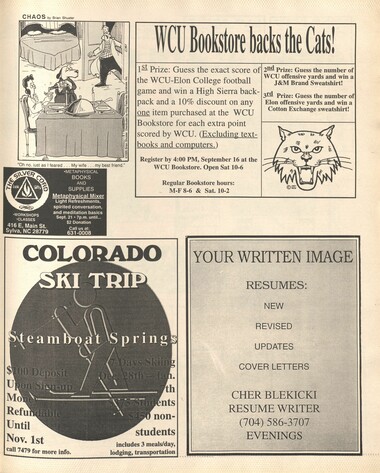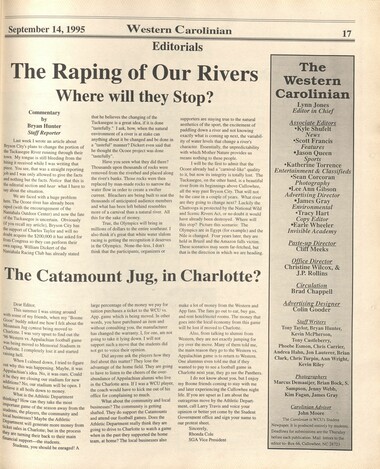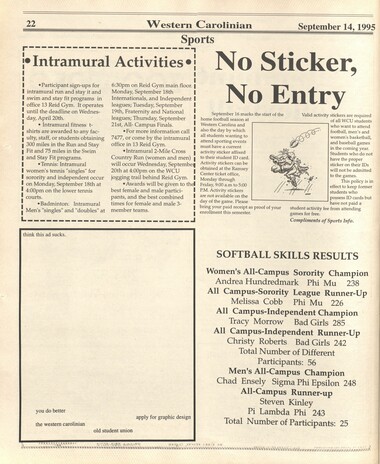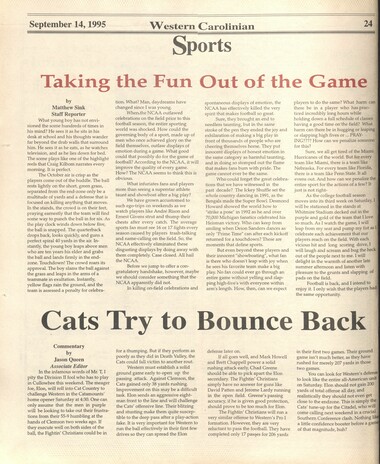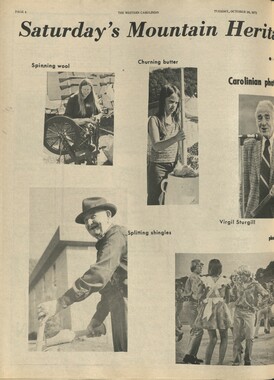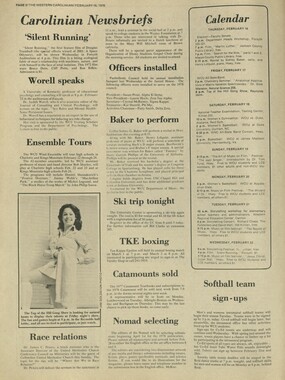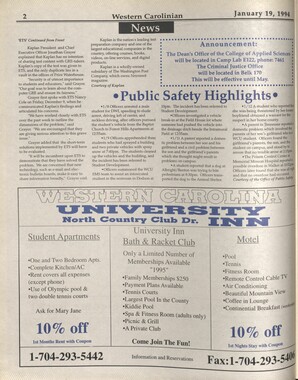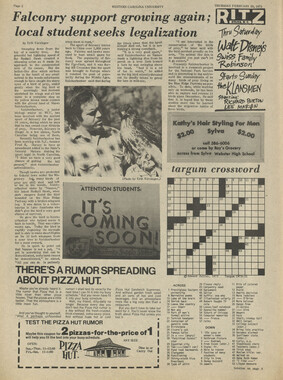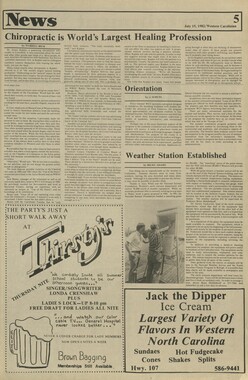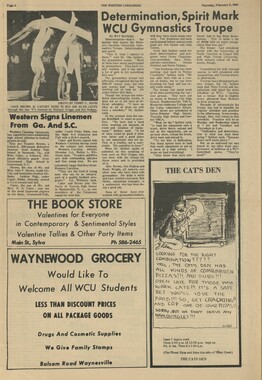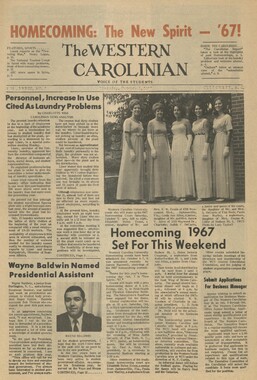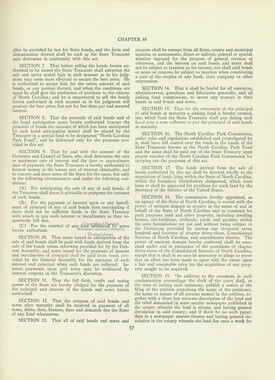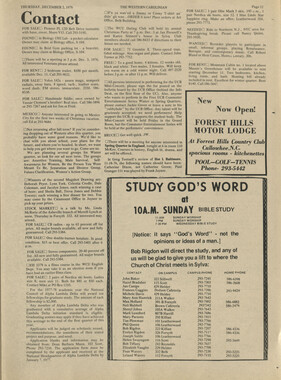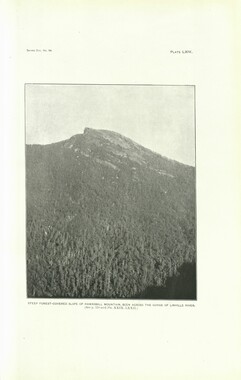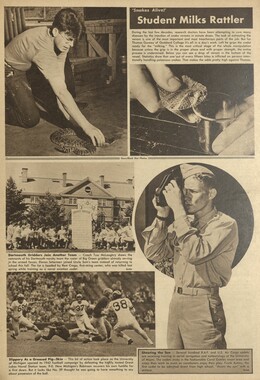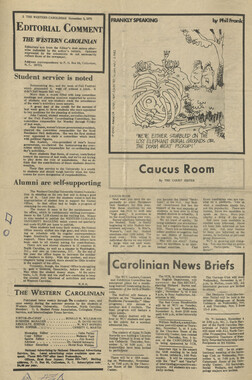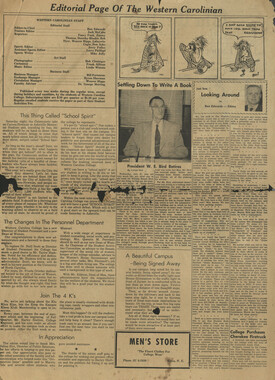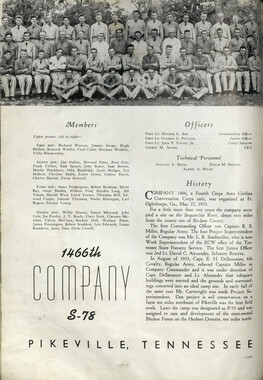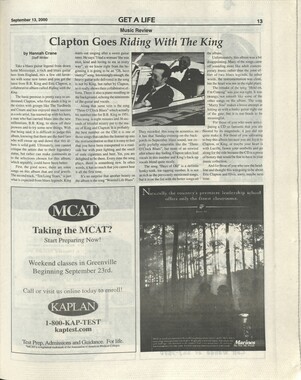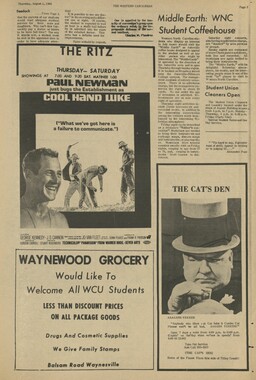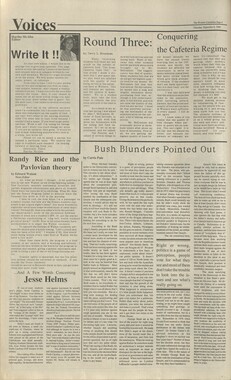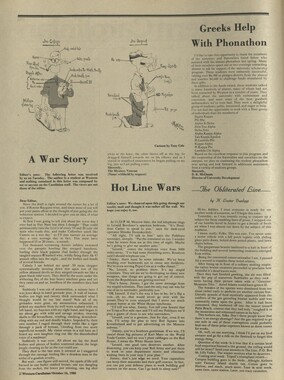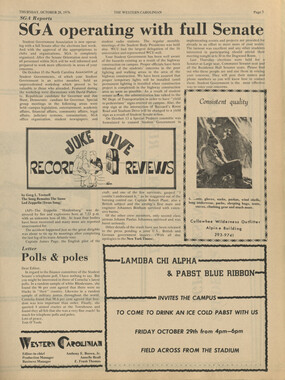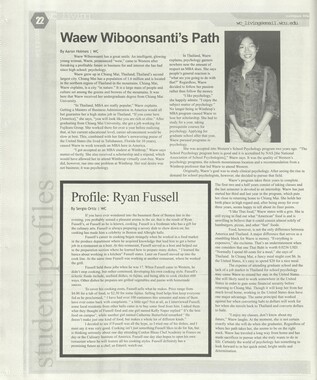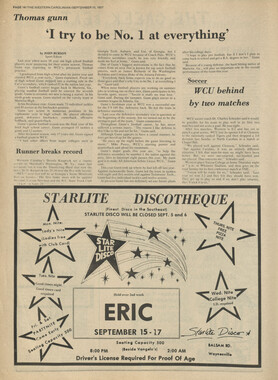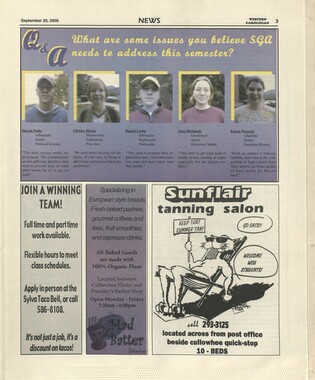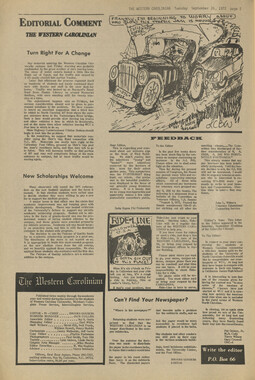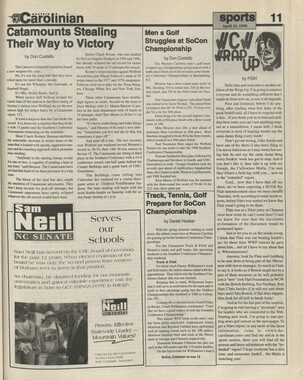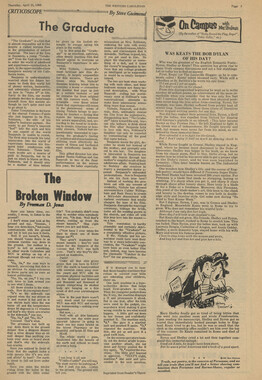Western Carolina University (21)
View all
- Canton Champion Fibre Company (2308)
- Cherokee Traditions (291)
- Civil War in Southern Appalachia (165)
- Craft Revival (1942)
- George Masa Collection (137)
- Great Smoky Mountains - A Park for America (3080)
- Highlights from Western Carolina University (422)
- Horace Kephart (998)
- Journeys Through Jackson (159)
- LGBTQIA+ Archive of Jackson County (90)
- Oral Histories of Western North Carolina (318)
- Picturing Appalachia (6617)
- Stories of Mountain Folk (413)
- Travel Western North Carolina (153)
- Western Carolina University Fine Art Museum Vitreograph Collection (129)
- Western Carolina University Herbarium (92)
- Western Carolina University: Making Memories (738)
- Western Carolina University Publications (2491)
- Western Carolina University Restricted Electronic Theses and Dissertations (146)
- Western North Carolina Regional Maps (71)
- World War II in Southern Appalachia (131)
University of North Carolina Asheville (6)
View all
- Allanstand Cottage Industries (62)
- Appalachian National Park Association (53)
- Bennett, Kelly, 1890-1974 (1463)
- Berry, Walter (76)
- Brasstown Carvers (40)
- Carver, George Washington, 1864?-1943 (26)
- Cathey, Joseph, 1803-1874 (1)
- Champion Fibre Company (233)
- Champion Paper and Fibre Company (297)
- Cherokee Indian Fair Association (16)
- Cherokee Language Program (22)
- Crowe, Amanda (40)
- Edmonston, Thomas Benton, 1842-1907 (7)
- Ensley, A. L. (Abraham Lincoln), 1865-1948 (275)
- Fromer, Irving Rhodes, 1913-1994 (70)
- George Butz (BFS 1907) (46)
- Goodrich, Frances Louisa (120)
- Grant, George Alexander, 1891-1964 (96)
- Heard, Marian Gladys (60)
- Kephart, Calvin, 1883-1969 (15)
- Kephart, Horace, 1862-1931 (313)
- Kephart, Laura, 1862-1954 (91)
- Laney, Gideon Thomas, 1889-1976 (439)
- Masa, George, 1881-1933 (61)
- McElhinney, William Julian, 1896-1953 (44)
- Niggli, Josephina, 1910-1983 (10)
- North Carolina Park Commission (105)
- Osborne, Kezia Stradley (9)
- Owens, Samuel Robert, 1918-1995 (11)
- Penland Weavers and Potters (36)
- Roberts, Vivienne (15)
- Roth, Albert, 1890-1974 (142)
- Schenck, Carl Alwin, 1868-1955 (1)
- Sherrill's Photography Studio (2565)
- Southern Highland Handicraft Guild (127)
- Southern Highlanders, Inc. (71)
- Stalcup, Jesse Bryson (46)
- Stearns, I. K. (213)
- Thompson, James Edward, 1880-1976 (226)
- United States. Indian Arts and Crafts Board (130)
- USFS (683)
- Vance, Zebulon Baird, 1830-1894 (1)
- Weaver, Zebulon, 1872-1948 (58)
- Western Carolina College (230)
- Western Carolina Teachers College (282)
- Western Carolina University (2008)
- Western Carolina University. Mountain Heritage Center (18)
- Whitman, Walt, 1819-1892 (10)
- Wilburn, Hiram Coleman, 1880-1967 (73)
- Williams, Isadora (3)
- Cain, Doreyl Ammons (0)
- Crittenden, Lorraine (0)
- Rhodes, Judy (0)
- Smith, Edward Clark (0)
- Appalachian Region, Southern (3032)
- Asheville (N.C.) (1945)
- Avery County (N.C.) (26)
- Blount County (Tenn.) (195)
- Buncombe County (N.C.) (1680)
- Cherokee County (N.C.) (283)
- Clay County (N.C.) (556)
- Graham County (N.C.) (238)
- Great Smoky Mountains National Park (N.C. and Tenn.) (535)
- Haywood County (N.C.) (3573)
- Henderson County (N.C.) (70)
- Jackson County (N.C.) (4926)
- Knox County (Tenn.) (35)
- Knoxville (Tenn.) (13)
- Lake Santeetlah (N.C.) (10)
- Macon County (N.C.) (421)
- Madison County (N.C.) (216)
- McDowell County (N.C.) (39)
- Mitchell County (N.C.) (135)
- Polk County (N.C.) (35)
- Qualla Boundary (982)
- Rutherford County (N.C.) (78)
- Swain County (N.C.) (2185)
- Transylvania County (N.C.) (270)
- Watauga County (N.C.) (12)
- Waynesville (N.C.) (86)
- Yancey County (N.C.) (72)
- Aerial Photographs (3)
- Aerial Views (60)
- Albums (books) (4)
- Articles (1)
- Artifacts (object Genre) (228)
- Bibliographies (1)
- Biography (general Genre) (2)
- Cards (information Artifacts) (38)
- Clippings (information Artifacts) (193)
- Copybooks (instructional Materials) (3)
- Crafts (art Genres) (622)
- Depictions (visual Works) (21)
- Design Drawings (1)
- Digital Moving Image Formats (2)
- Drawings (visual Works) (185)
- Envelopes (115)
- Exhibitions (events) (1)
- Facsimiles (reproductions) (1)
- Fiction (general Genre) (4)
- Financial Records (12)
- Fliers (printed Matter) (67)
- Glass Plate Negatives (381)
- Guidebooks (2)
- Internegatives (10)
- Interviews (823)
- Land Surveys (102)
- Letters (correspondence) (1070)
- Manuscripts (documents) (618)
- Maps (documents) (177)
- Memorandums (25)
- Minutes (administrative Records) (59)
- Negatives (photographs) (6090)
- Newsletters (1290)
- Newspapers (2)
- Notebooks (8)
- Occupation Currency (1)
- Paintings (visual Works) (1)
- Pen And Ink Drawings (1)
- Periodicals (194)
- Personal Narratives (10)
- Photographs (12977)
- Plans (maps) (1)
- Poetry (6)
- Portraits (4568)
- Postcards (329)
- Programs (documents) (181)
- Publications (documents) (2444)
- Questionnaires (65)
- Relief Prints (26)
- Sayings (literary Genre) (1)
- Scrapbooks (282)
- Sheet Music (2)
- Slides (photographs) (402)
- Songs (musical Compositions) (2)
- Sound Recordings (802)
- Specimens (92)
- Speeches (documents) (18)
- Tintypes (photographs) (8)
- Transcripts (329)
- Text Messages (0)
- A.L. Ensley Collection (275)
- Appalachian Industrial School Records (7)
- Appalachian National Park Association Records (336)
- Axley-Meroney Collection (2)
- Bayard Wootten Photograph Collection (20)
- Bethel Rural Community Organization Collection (7)
- Blumer Collection (5)
- C.W. Slagle Collection (20)
- Canton Area Historical Museum (2110)
- Carlos C. Campbell Collection (462)
- Cataloochee History Project (64)
- Cherokee Studies Collection (4)
- Daisy Dame Photograph Album (5)
- Daniel Boone VI Collection (1)
- Doris Ulmann Photograph Collection (112)
- Elizabeth H. Lasley Collection (1)
- Elizabeth Woolworth Szold Fleharty Collection (4)
- Frank Fry Collection (95)
- George Masa Collection (173)
- Gideon Laney Collection (452)
- Hazel Scarborough Collection (2)
- Hiram C. Wilburn Papers (28)
- Historic Photographs Collection (236)
- Horace Kephart Collection (861)
- Humbard Collection (33)
- Hunter and Weaver Families Collection (1)
- I. D. Blumenthal Collection (4)
- Isadora Williams Collection (4)
- Jesse Bryson Stalcup Collection (47)
- Jim Thompson Collection (224)
- John B. Battle Collection (7)
- John C. Campbell Folk School Records (80)
- John Parris Collection (6)
- Judaculla Rock project (2)
- Kelly Bennett Collection (1482)
- Love Family Papers (11)
- Major Wiley Parris Civil War Letters (3)
- Map Collection (12)
- McFee-Misemer Civil War Letters (34)
- Mountain Heritage Center Collection (4)
- Norburn - Robertson - Thomson Families Collection (44)
- Pauline Hood Collection (7)
- Pre-Guild Collection (2)
- Qualla Arts and Crafts Mutual Collection (12)
- R.A. Romanes Collection (681)
- Rosser H. Taylor Collection (1)
- Samuel Robert Owens Collection (94)
- Sara Madison Collection (144)
- Sherrill Studio Photo Collection (2558)
- Smoky Mountains Hiking Club Collection (616)
- Stories of Mountain Folk - Radio Programs (374)
- The Reporter, Western Carolina University (510)
- Venoy and Elizabeth Reed Collection (16)
- WCU Gender and Sexuality Oral History Project (36)
- WCU Mountain Heritage Center Oral Histories (25)
- WCU Oral History Collection - Mountain People, Mountain Lives (71)
- WCU Students Newspapers Collection (1923)
- Western North Carolina Tomorrow Black Oral History Project (69)
- William Williams Stringfield Collection (2)
- Zebulon Weaver Collection (109)
- African Americans (390)
- Appalachian Trail (35)
- Artisans (521)
- Cherokee art (84)
- Cherokee artists -- North Carolina (10)
- Cherokee language (21)
- Cherokee pottery (101)
- Cherokee women (208)
- Church buildings (190)
- Civilian Conservation Corps (U.S.) (111)
- College student newspapers and periodicals (2012)
- Dams (108)
- Dance (1023)
- Education (222)
- Floods (63)
- Folk music (1015)
- Forced removal, 1813-1903 (2)
- Forest conservation (220)
- Forests and forestry (1198)
- Gender nonconformity (4)
- Great Smoky Mountains National Park (N.C. and Tenn.) (181)
- Hunting (47)
- Landscape photography (25)
- Logging (122)
- Maps (83)
- Mines and mineral resources (9)
- North Carolina -- Maps (18)
- Paper industry (38)
- Postcards (255)
- Pottery (135)
- Railroad trains (72)
- Rural electrification -- North Carolina, Western (3)
- School integration -- Southern States (2)
- Segregation -- North Carolina, Western (5)
- Slavery (5)
- Sports (452)
- Storytelling (243)
- Waterfalls -- Great Smoky Mountains (N.C. and Tenn.) (66)
- Weaving -- Appalachian Region, Southern (280)
- Wood-carving -- Appalachian Region, Southern (328)
- World War, 1939-1945 (174)
Western Carolinian Volume 61 Number 03 (04)
Item
Item’s are ‘child’ level descriptions to ‘parent’ objects, (e.g. one page of a whole book).
-
-
September 14,1995 Western Carolinian 11 Environment The Ten Commandments For a Low-Impact Wilderness Experience by Adam Riggsbee StaffReporter "The earth was created with the assistance of the sun and it should be left as it was. I never said the land was mine to do with as I chose. The only one with that right is the one who made it." -Chief Joseph of the Nez Perce Tribe, 1870 Seeing nature in its true form is the joy of the wilderness experience. When taking into account the modern circumstances acreage of the pure wilderness, it becomes obvious we have a need to conserve these precious lands. The" low-impact" or "no-trace" method of camping and backpacking serves this purpose. Here are the ten commandments of low-impact wilderness travel. 1. Nature follows its own law. Nature is amazingly diverse. The arid desert of the Southwest reacts to humans differently than the humid climate of the Southeast. Taking this into consideration, before each trip, consult with local authorities (rangers or other park officials), U.S. Forest Service or National Park Service for the proper handling of a specific area. 2. Watch your step. Stick to existing trails; if there are none, spare the plant life. Try to use rocky terrain or dry drainage ways. Stay on the main trial, especially if it's wet or snow-covered. Avoid short-cutting switchbacks —this means no suicide routes straight up or down the mountain. 3. Family-sized groups. Keep the number of companions to a minimum; the ideal number is two. Four to six should be the limit, because more people means more damage. 4. Plan ahead. Try to plan your trips so that you avoid weekends and holidays. Of course, this is not always possible, but try to keep it in mind. 5. Smart camping. Scout for a campsite where fire, tent, and toilet will have the least effect. Look for ridgetop or timbered campsites. Always make camp at least 200 feet away from any water source. 6. Safe fire. Use an existing fire ring if you find one. If one does not exist, choose an area with little or no vegetation. Keep the fire small. Gather small firewood from timbered areas outside camp. Never cut standing trees. 7. Nature's toilet. When nature calls, make sure to answer at least 200 yards from any water source or your campsite. Dig a hole six to eight inches deep, keeping the sod intact. After use, replace the soil and sod. 8. Biodegradable soap. While it is true that some rivers can dilute soaps better than the land, the organisms in the water cannot. To prevent damage to the land, use biodegradable soap and do not dump it into the water. 9. Enjoy the quietness. God gave you two ears and one mouth for a good reason. The sounds of the wilderness are just as beautiful as the sights. 10. Give a hoot! Don't pollute. Last and most importantly, if you pack it in then pack it out. The best experience in the wilds is when one learns to treat nature with the respect it deserves. If everyone does his part when visiting our parks and other wilderness areas, we can ensure their preservation. No-trace camping is simple and it protects fragile ecosystems. Leave the beauty behind, not the trash. s cjsfti ^'Your Indie rock one-stop" -a>_ gU HUP *' » *"■ o ijT-- , i 779 Haywood Rd. f^ci^S Asheville, NC W#____#-*l (704) 254-3232 Mon-Sat\ U-7 p.m. Sunday I- 6 p.m. Itfs your right! This week I have the addresses of two members of the North Carolina Senate from the western part of the state. R.L. Cark (R- 28th District) 2 Quail Cove Road Asheville, NC 28804 Clark Plexico (D- 29th District) PO Box 1904 Hendersonville, NC 28793 The Yarrow Plant The Natural Way to Stop Bleeding by Adam Riggsbee StaffReporter Yarrow, Achillea milleofolium, is a perennial plant found worldwide. Seed germination happens easily in almost any soil, but is especially common in dry and sunny places. Roadsides, embankments, open fields and pastures most easily support yarrow. Once germination has occurred, the plant begins to establish itself with a creeping rootstock. Small rosettes of lancelot-shaped leaves are produced by the rootstock. The leaves are pinnately divided, giving the yarrow a fernlike appearance. They remain green throughout the year. In early spring, the plant begins to develop a round pithy flower stem that branches near the top into flat clusters of many tiny whitish blossoms (usually 1 to 2 feet). Blooms are present from June to October. According to Wendell Cochran's A Guide to Gathering and Using Cherokee Medicinal Herbs, yarrow has many medicinal uses. It is most commonly used as a hemostatic in order to stop bleeding. This is done by applying freshly crushed leaves to an open wound or cut. Internal bleeding including nosebleeds and stomach and intestinal disorders, is treated by internally taking the fresh juices diluted with water. Tea made from the leaves is said to stimulate gastric and intestinal functions, while increasing appetite and aiding in digestion. Minor skin wounds, sores and chapped hands can be treated by an astringent made by boiling the stems and leaves. A. milleofolium GET INVOLVED! Come to the Campus Volunteer Fair Monday, September 25, 4-6 p.m. Dodson Cafeteria Courtyard Meet representatives of local service organizations and learn how you can make a difference in the community Learn new skills...Help others...
Object
Object’s are ‘parent’ level descriptions to ‘children’ items, (e.g. a book with pages).
-
The Western Carolinian is Western Carolina University's student-run newspaper. The paper was published as the Cullowhee Yodel from 1924 to 1931 before changing its name to The Western Carolinian in 1933.
-
